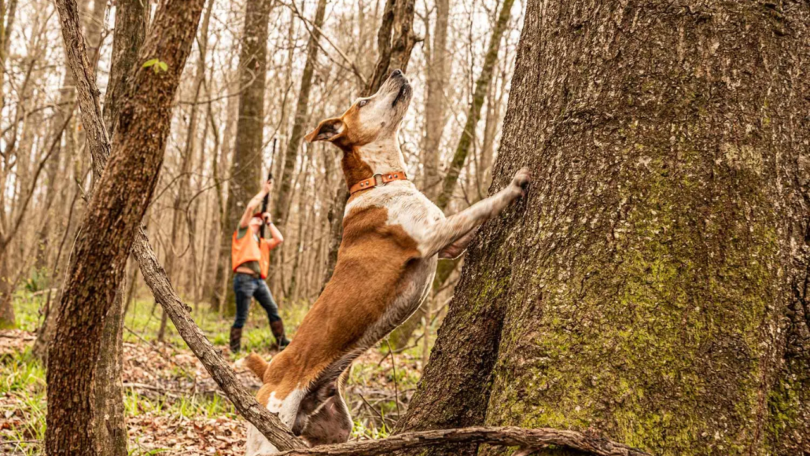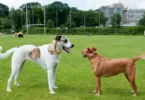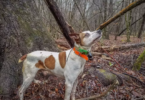Squirrel hunting with a well-trained dog can be an exhilarating and rewarding experience for outdoor enthusiasts. The key to success lies in the careful training of your canine companion. This comprehensive guide will walk you through the essential strategies for training your dog to become an expert squirrel hunter, covering everything from basic obedience to advanced hunting techniques.
Understanding the Basics: Laying the Foundation
Before diving into specialized squirrel hunting techniques, it's crucial to establish a solid foundation of basic obedience and trust with your dog. This groundwork will make advanced training much more effective and enjoyable for both you and your canine partner.
1. Establishing a Strong Bond
The first step in training your dog for squirrel hunting is to build a strong, trusting relationship. Spend quality time with your dog, engaging in activities that strengthen your bond.
Bonding Activities:
- Daily walks and playtime
- Positive reinforcement training sessions
- Grooming and physical affection
Expert Tip: Consistency is key. Set aside dedicated time each day for bonding activities to reinforce your relationship.
2. Basic Obedience Training
A well-behaved dog is essential for successful hunting. Focus on teaching these fundamental commands:
- Sit
- Stay
- Come
- Heel
- Leave it
Training Technique: Use positive reinforcement methods, rewarding your dog with treats, praise, or play for correctly following commands. This builds a strong association between obedience and positive outcomes.
3. Developing a Reliable Recall
A strong recall is crucial for squirrel hunting dogs. Your dog must return to you promptly when called, even in the excitement of the hunt.
Recall Training Exercise:
- Start in a distraction-free environment.
- Call your dog using a consistent command (e.g., “Come” or their name).
- Reward them enthusiastically when they respond.
- Gradually increase distractions and distance as your dog improves.
Pro Tip: Use a long lead during initial training sessions to ensure safety while allowing your dog some freedom to explore.
Introducing Hunting-Specific Skills
Once your dog has mastered basic obedience, it's time to focus on the specialized skills required for squirrel hunting.
4. Scent Training: Developing a Keen Nose
A squirrel hunting dog's ability to track scent is paramount to their success in the field. Here's how to develop this crucial skill:
Scent Introduction:
- Obtain squirrel scent or use actual squirrel tails (ethically sourced).
- Allow your dog to become familiar with the scent in a controlled environment.
- Create simple scent trails by dragging the scented object along the ground.
- Encourage your dog to follow the trail, rewarding them when they show interest.
Progressive Training:
- Gradually increase the complexity of scent trails.
- Vary the age of the scent to mimic real hunting conditions.
- Introduce obstacles and distractions to challenge your dog's focus.
5. Treeing: The Heart of Squirrel Hunting
Teaching your dog to locate and signal treed squirrels is a cornerstone of successful hunting. Here's how to develop and reinforce this behavior:
Treeing Exercise:
- Use a squirrel pelt or scented toy attached to a long pole.
- “Plant” the lure in a tree, allowing your dog to see you do this initially.
- Encourage your dog to find and bark at the lure.
- Reward enthusiastically when your dog barks at the base of the tree.
Advanced Treeing Training:
- Hide the lure when your dog isn't watching to simulate real hunting scenarios.
- Use multiple trees to teach your dog to search thoroughly.
- Introduce the concept of “moving squirrels” by relocating the lure between trees.
6. Developing Stamina and Endurance
Squirrel hunting often involves covering significant distances and navigating challenging terrain. Building your dog's stamina is crucial for successful, enjoyable hunts.
Endurance Training Techniques:
- Gradually increase the duration and intensity of exercise sessions.
- Incorporate varied terrain in your training routines, including hills and dense underbrush.
- Use games like fetch or frisbee to make endurance training fun and engaging.
Safety Note: Always monitor your dog closely for signs of fatigue or overheating during training. Provide plenty of water and rest breaks.
7. Teaching Restraint and Patience
While enthusiasm is valuable in a hunting dog, teaching restraint is equally important. Your dog should learn to wait calmly until given the command to hunt.
Restraint Exercises:
- Practice “stay” commands in exciting environments.
- Use a release word (e.g., “hunt” or “find it”) to signal when your dog can begin searching.
- Reward calm behavior and ignore or redirect overexcitement.
Pro Tip: Gradually increase the duration of the “stay” command and the level of distractions to build your dog's self-control.
Advanced Training Techniques
As your dog progresses in their training, these advanced techniques will help refine their skills and address common challenges in squirrel hunting.
8. Silent Tracking
While some hunters prefer a vocal dog, others value silent tracking. If you prefer a quieter approach, here's how to encourage silent pursuit:
Silent Tracking Training:
- Use a verbal cue like “quiet” or “hush” when your dog vocalizes during tracking.
- Reward silent tracking with high-value treats or praise.
- If your dog barks, calmly interrupt the behavior and redirect their focus to the scent trail.
Expert Insight: Some breeds are naturally more vocal than others. Be patient and consistent in your training, recognizing that some dogs may take longer to master silent tracking.
9. Multiple Tree Training
Teaching your dog to handle situations where a squirrel jumps from tree to tree is crucial for successful hunts.
Multiple Tree Exercise:
- Set up multiple “squirrel stations” (scented objects) in different trees.
- Lead your dog to the first station and allow them to tree.
- After a short period, move the scent to another nearby tree.
- Encourage your dog to find the new location.
Training Progression: Gradually increase the distance between trees and the complexity of the scent trail to challenge your dog's tracking abilities.
10. Handling False Trees
Sometimes, dogs may “false tree,” barking at a tree where there's no squirrel. Here's how to address this issue:
False Tree Correction:
- When your dog false trees, calmly approach and investigate the tree yourself.
- If no squirrel is present, use a command like “no squirrel” or “empty.”
- Lead your dog away and encourage them to continue searching.
- Consistently reinforce this behavior to help your dog distinguish between true and false trees.
Patience is Key: Remember that learning to differentiate between true and false trees takes time and experience. Remain patient and consistent in your training approach.
11. Water Training
Squirrels often use water features to throw off pursuing dogs. Teaching your dog to track through and around water is valuable:
Water Tracking Exercises:
- Create scent trails that cross shallow streams or ponds.
- Encourage your dog to follow the scent into and out of the water.
- Reward successful water crossings and scent recovery on the other side.
Safety First: Always ensure water training is conducted in safe, shallow areas and supervise your dog closely.
Maintaining and Improving Skills
Training a squirrel hunting dog is an ongoing process. Even experienced dogs benefit from regular practice and skill refinement.
12. Off-Season Training
Keep your dog's skills sharp during the off-season with these activities:
- Regular scent work exercises using squirrel scents
- Simulated hunts in varied environments
- Obedience refreshers and advanced command training
Creative Training Idea: Set up a squirrel hunting obstacle course in your backyard, incorporating scent trails, treeing stations, and agility elements.
13. Physical Conditioning
Maintain your dog's physical fitness year-round to ensure they're ready for the demands of hunting season:
- Regular exercise routines tailored to your dog's age and breed
- Swimming for low-impact endurance building
- Agility training to improve coordination and reflexes
Health Tip: Consult with your veterinarian to develop a safe and effective conditioning program for your dog.
14. Mental Stimulation
Keep your dog's mind sharp with puzzle toys, scent games, and varied training scenarios. A mentally stimulated dog is more responsive and eager to learn during hunting training.
Mental Stimulation Ideas:
- Hide treats or scented objects around your home or yard for your dog to find
- Use interactive puzzle toys that dispense treats
- Teach new tricks or commands to keep your dog's mind engaged
Addressing Common Challenges
Even well-trained dogs may encounter difficulties. Here's how to handle some common issues:
15. Overexcitement and Loss of Focus
If your dog becomes overly excited and loses focus during hunts:
- Practice calm behavior in increasingly stimulating environments
- Use redirection techniques to refocus your dog's attention
- Incorporate more impulse control exercises in your training regimen
16. Reluctance to Enter Dense Cover
Some dogs may hesitate to enter thick underbrush. To address this:
- Gradually introduce your dog to denser cover during training
- Use encouragement and rewards to build confidence
- Consider using a lightweight protective vest to help your dog feel more comfortable in thick vegetation
17. Ignoring Treed Squirrels
If your dog loses interest in treed squirrels quickly:
- Increase the value of the reward for successful treeing
- Practice shorter, more frequent treeing exercises to build enthusiasm
- Use squirrel scent or visual lures to maintain your dog's interest during longer waits
Ethical Considerations and Responsible Hunting
As you train your squirrel hunting dog, it's important to emphasize ethical hunting practices:
- Teach your dog to retrieve downed game gently
- Practice and enforce shot selection to ensure clean, ethical harvests
- Respect property boundaries and hunting regulations
- Prioritize your dog's safety and well-being at all times
By following these expert training strategies and maintaining a consistent, positive approach, you'll develop a skilled, reliable squirrel hunting companion. Remember that every dog is unique, so be prepared to adapt your training methods to suit your individual dog's personality and learning style.
With patience, dedication, and the right techniques, you and your canine partner will be well-equipped for successful and enjoyable squirrel hunting adventures.











Leave a Comment